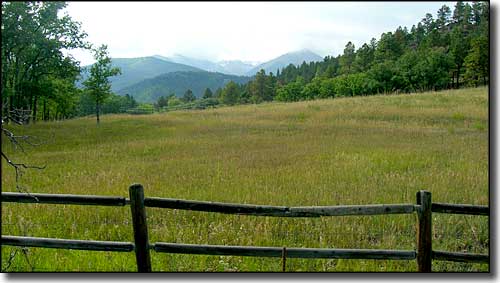 |
|---|
About FencesFence Law in Colorado |
|
|
 |
|
Just saying that Colorado is a "fence out" state doesn't nearly cover the issue. Some states are "fence in," some are "fence out" and every state defines each distinction a bit differently. But to folks who are not attorneys, it doesn't make a lot of difference: fence law is a very complex issue everywhere. It encompasses elements as diverse as the definition of "fencing," "trespass," "damage" and Federal and state open range statutes dating back to the 1800's. As ambiguous as the concept seems to be, that ambiguity has survived various attempts at legislative limitation and considerable court interpretation over the years. The basic tenet in the Colorado statute is that "any person maintaining in good repair a lawful fence may recover damages for trespass and injury to grass, garden or vegetable products or other crops of such person from the owner of any livestock which break through such fence." It further states that "no person shall recover damages for such a trespass or injury unless... such grass, garden or vegetable products or crops were protected by such a lawful fence." Livestock are defined to include "horses, cattle, mules, asses, goats, sheep, swine, buffalo, and cattalo." A property may not be protected on all sides by a lawful fence but if livestock should break through what lawful fence there is and cause damage on that property, the owner of that livestock may be financially liable. The same statute goes on to define a lawful fence as "a well-constructed, three-barbed wire fence with substantial posts set at a distance of approximately 20 feet apart, and sufficient to turn ordinary horses and cattle with all gates equally as good as the fence or any other fence of like efficiency." "Partition fences between agricultural and grazing land shall be erected and kept in repair at the joint costs of the owners of the respective adjoining tracts" unless the respective owners make other agreements in writing. Barring other agreements, the law allows the owner (or tenant) of one tract to serve written notice to the owner (or tenant) of an adjacent tract requiring participation in the erection or repair of one-half of a partition fence. If, after 30 days, the person being served doesn't respond and signify intent to comply (or not) with the notice, the person giving notice may then erect or repair the entire fence and collect one-half the cost through court action. There is a further caveat in this provision in that the fence must essentially be on the actual property boundary: should the fence in question be set back any distance from that boundary, the entire cost is on the person whose land underlies the fence (unless the adjacent landowner signifies in writing his willingness to cover some portion of that cost). A rancher who releases his livestock on land where he has the right to graze them is under no obligation to prevent them from trespassing on the unenclosed property of any adjacent landowner. In addition, as long as the livestock trespassed on that other property simply by following their natural grazing instincts, that livestock owner is not liable for any damage they cause. If, however, the rancher should willfully impose his livestock on another owner's land, he is liable for the trespass and any damages incurred. There is a very fine line between the trespass being willful and the rancher expecting his livestock to naturally go there without any encouragement on his part. If there were a lawful fence in between, this would be a whole other story. Without a lawful fence in between, the livestock owner can actually claim exemplary damages from the trespassed landowner should the trespassed landowner "harass" the livestock in driving them off his land. From the above, one can see that this is a complicated subject and discussion of it can get very heated quickly. Needless to say, this author is not qualified to present the whole of the subject in this space. Nor does this article purport to cite all applicable statutes or refer to all applicable court decisions regarding fences and livestock trespass. Hopefully, there is enough info here to convince a reader to consult with a competent attorney before s/he gets in over his/her head with a possible fence/trespass problem. |
|
|
 |
| Index - Arizona - Colorado - Idaho - Montana - Nevada - New Mexico - Utah - Wyoming National Forests - National Parks - Scenic Byways - Ski & Snowboard Areas - BLM Sites Wilderness Areas - National Wildlife Refuges - National Trails - Rural Life Advertise With Us - About This Site - Privacy Policy |
| Photos courtesy of Sangres.com, CCA ShareAlike 3.0 License. Text Copyright © by Sangres.com. All rights reserved. |